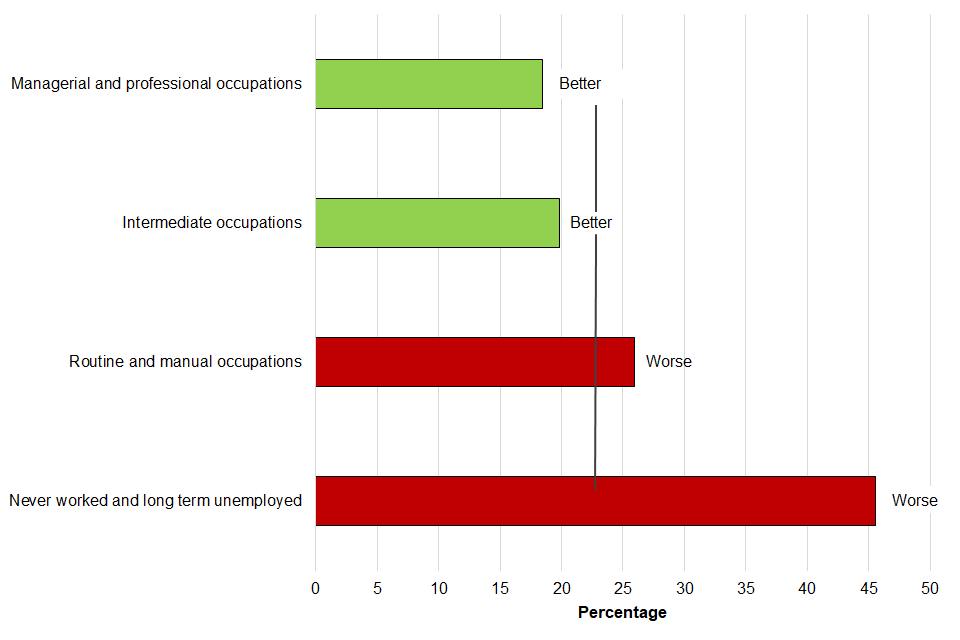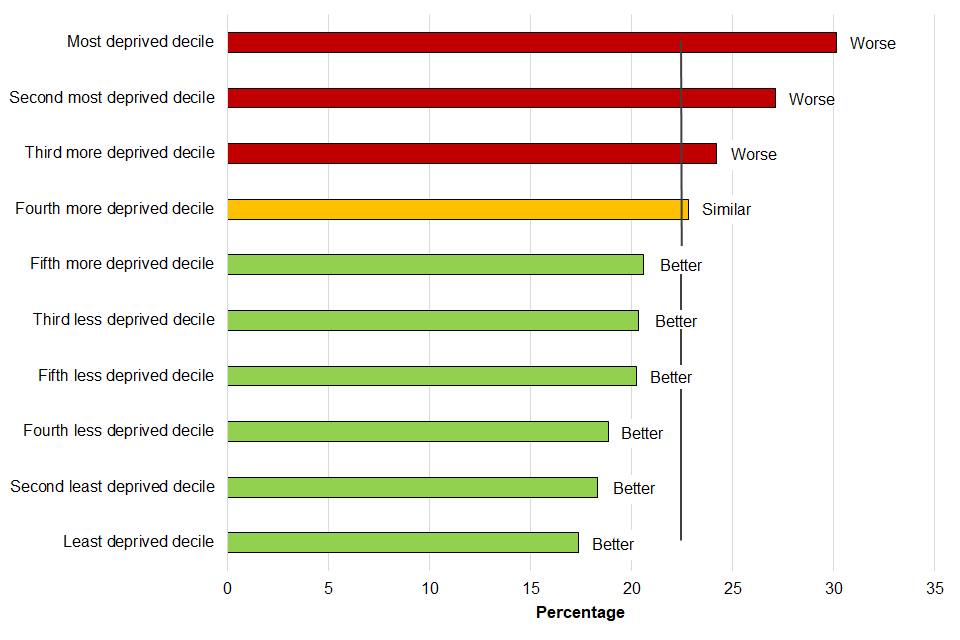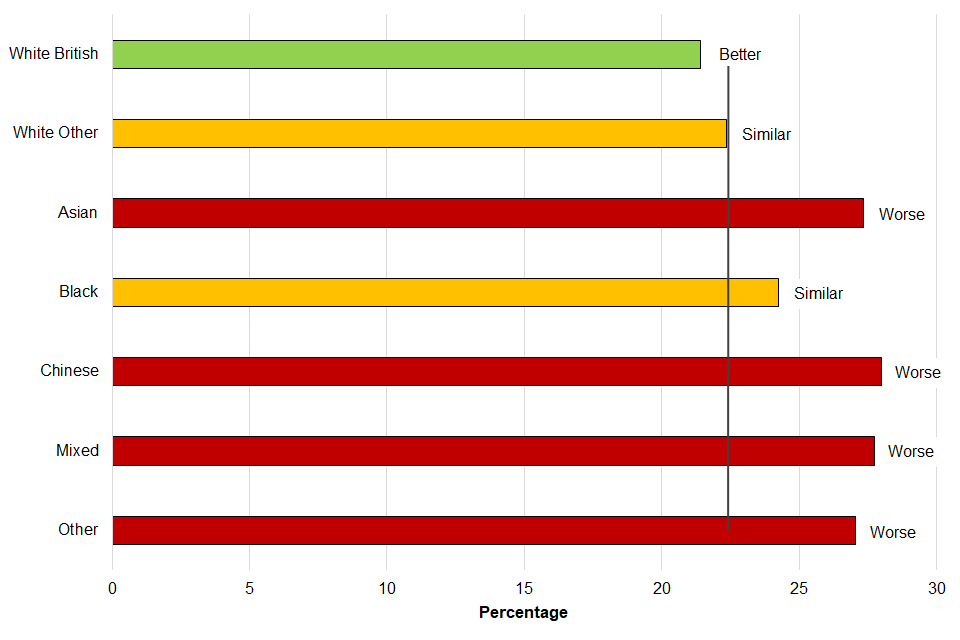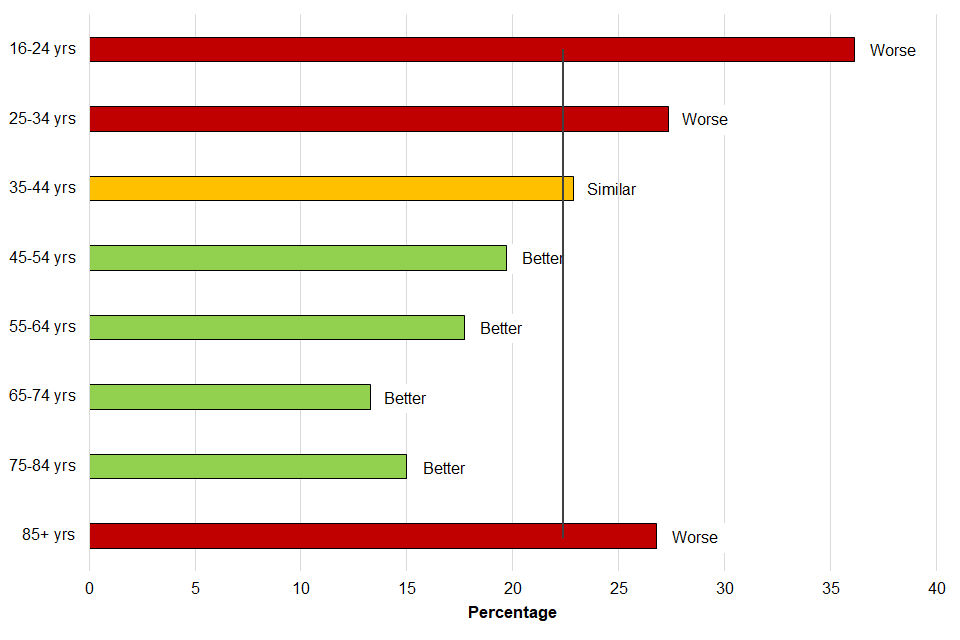Public Health Outcomes Framework: commentary, August 2021
Published 3 August 2021
Applies to England
New in this update
The latest update includes data for 6 indicators, of which one has a new definition:
- B10 – Killed and seriously injured (KSI) casualties on England’s roads
and one new indicator has been added as a result of the PHOF review:
- B19 – Loneliness: percentage of adults who feel lonely often / always or some of the time
For a full rationale of all the changes made, please see the published government response.
Summary of selected updated indicators
This summary provides the main messages from indicators updated with data new to the public domain. For a complete list of indicators that have been updated please see Public Health Outcomes Framework: indicator updates. Some indicators have not been updated or have been delayed due to the pandemic. A table of these can be found in the Recent updates section of the introduction page of the PHOF.
B10 Killed and seriously injured (KSI) casualties on England’s roads
This indicator is a revision of an earlier PHOF indicator that reported the rate of KSI events within the local population. The denominator is now the estimate of vehicle miles in the local area. See the further information section for details.
The time series begins at 2017 as this is the earliest year where most of the upper tier local authorities can be benchmarked against England or their region by the above criteria.
Confidence intervals are calculated where the unadjusted count is at least 98% of the adjusted count. This threshold has been determined with DfT to consistently identify areas for inclusion in benchmarking. Areas with no confidence interval reported cannot be benchmarked against England or their region and are shaded grey, while areas with a confidence interval reported are shaded red, amber or green. All areas are included in the charts, but extra caution should be applied to comparisons involving areas with grey shading.
Figure 1 shows KSI casualties for each region in England. Most regions do not have confidence intervals and so cannot be compared to England’s rate of 89.7 per billion vehicle miles. Those that do have confidence intervals are London with 172.8 casualties per billion vehicle miles, East of England with 73.9 casualties, and West Midlands with 61.2.
Figure 1: KSI casualties on England’s roads by region, compared with England, 2019

Figure 2 shows the rate of KSI casualties in England appears to have reduced from 94.4 in 2018 to 89.7 persons per billion vehicle miles in 2019. It is not possible to say whether this is a significant change.
Figure 2: Trend in KSI casualties on England’s roads, 2017 to 2019

B19 Loneliness: adults who feel lonely often or always, or some of the time
This indicator has been added in response to the latest PHOF review. Feeling lonely is linked to early deaths and other health issues [footnote 1]. People who experience chronic loneliness are more likely to be readmitted to hospital or have a longer stay [footnote 2], and there is also evidence that lonely people are more likely to visit a GP or A&E, and more likely to enter local authority funded residential care [footnote 3].
This indicator is calculated from Active Lives Adult Survey (ALAS) data from Sport England and is defined as the percentage of adults (aged 16 years and over) that responded to the question “How often do you feel lonely?” with “Always or often” or “Some of the time”.
In this first set of data, we have merged the 2 most frequent categories of feeling lonely: “Always or often” and “Some of the time” due to small sample sizes. This will be replaced next year by a 2-year pooled dataset that will have large enough sample sizes to report each of these categories separately. Presenting the data this year will help local authorities to work preventatively to tackle chronic loneliness by showing whether a local area or inequalities grouping has higher than national average levels of loneliness. As this is the first year of collection there is no trend data.
For 2019 to 2020 22.3% of adults in England reported feeling lonely always or often, or some of the time. There is some variation across population sub-groups indicating patterns of inequality.
Disabled adults were more than twice as likely to report feeling lonely than adults that were not disabled at 38.1% compared with 17.9% (Figure 3).
Figure 3: Percentage of adults who feel lonely always or often, or some of the time, by disability, compared with England, November 2019 to November 2020

There is a clear socioeconomic gradient, with 45.6% of adults who have never worked or were long term unemployed reporting feeling lonely compared with 18.5% of those in a managerial or professional occupation (Figure 4).
Figure 4: Percentage of adults who feel lonely always or often, or some of the time, by socioeconomic class, compared with England, November 2019 to November 2020

There is also a clear deprivation gradient with loneliness most likely to be reported by adults in the 3 most deprived areas (Figure 5).
Figure 5: Percentage of adults who feel lonely always or often, or some of the time, by LSOA deprivation decile, compared with England, November 2019 to November 2020

Adults in the Asian, Chinese, Mixed and Other ethnic groups were most likely to report feeling lonely (27.3%, 28.0%, 27.8%, and 27.1% respectively); whilst White British adults were the least likely to report feeling lonely (21.4%; Figure 6).
Figure 6: Percentage of adults who feel lonely always or often, or some of the time, by ethnic group, compared with England, November 2019 to November 2020

Adults aged 45 to 84 years old were less likely to report feeling lonely than younger and older adults, with 36.1% of 16 to 24 year olds, 27.3% of 25 to 34 year olds, and 26.8% of adults older than 85 reporting feeling lonely, compared with 13.3% 65 to 74 year olds (Figure 7).
Figure 7: Percentage of adults who feel lonely always or often, or some of the time, by age, compared with England, November 2019 to November 2020

Women were more likely to report feeling lonely than men at 26.3% compared with 17.8% (Figure 8).
Figure 8: Percentage of adults who feel lonely always or often, or some of the time, by sex, compared with England, November 2019 to November 2020

Further information
Vehicle miles as the denominator is preferred because KSI events are expected to be more closely correlated with local traffic than population size. This change particularly impacts local authorities with small resident populations but high traffic volumes, such as rural areas with major roads passing through. For these areas, rates would be expected to be relatively lower under the new measure.
For police forces that use injury-based reporting systems (IBRS), all injuries are entered and severity (‘slight’ or ‘serious’) is determined automatically. This differs from older systems, where the reporting police officer made a judgement about the severity. This change is estimated to lead to a small increase in the proportion of injuries that are classed as serious.
Department for Transport (DfT) have a introduced a model adjustment to their KSI statistics to account for the effect of widespread transition of police forces to IBRS from 2016 onwards. The adjusted count aims to measure what would have occurred if IBRS alone were used. Where there is an adjustment, the adjusted count is used, and a value note indicates that part of the count has been estimated. There is a longer-term expectation that more police forces will move to use IBRS. This should mean that the model adjustment becomes a less significant component of the KSI data. Until all forces use IBRS, DfT will refresh the model each year and backdate earlier years according to the latest model outputs. This indicator will be fully refreshed accordingly.
Background
The Public Health Outcomes Framework sets out a high-level overview of public health outcomes, at national and local level, supported by a broad set of indicators. An interactive web tool makes the PHOF data available publicly. This allows local authorities to assess progress in comparison to national averages and their peers, and develop their work plans accordingly.
View the Public Health Outcomes Framework
Responsible statistician, product lead: Kathryn Morgan
For queries relating to this publication, contact PHOF[email protected]
The next planned update is November 2021.
References
-
Holt-Lunstad J and others. ‘Loneliness and social isolation as risk factors for mortality: a metaAnalytic review’ (2015) ↩
-
Valtorta N and others. ‘Older Adults’ Social Relationships and Health Care Utilization: A Systematic Review’ (April 2018) 108(4) ↩
-
‘Investing to tackle loneliness: a discussion paper’ Social Finance (2015) ↩
